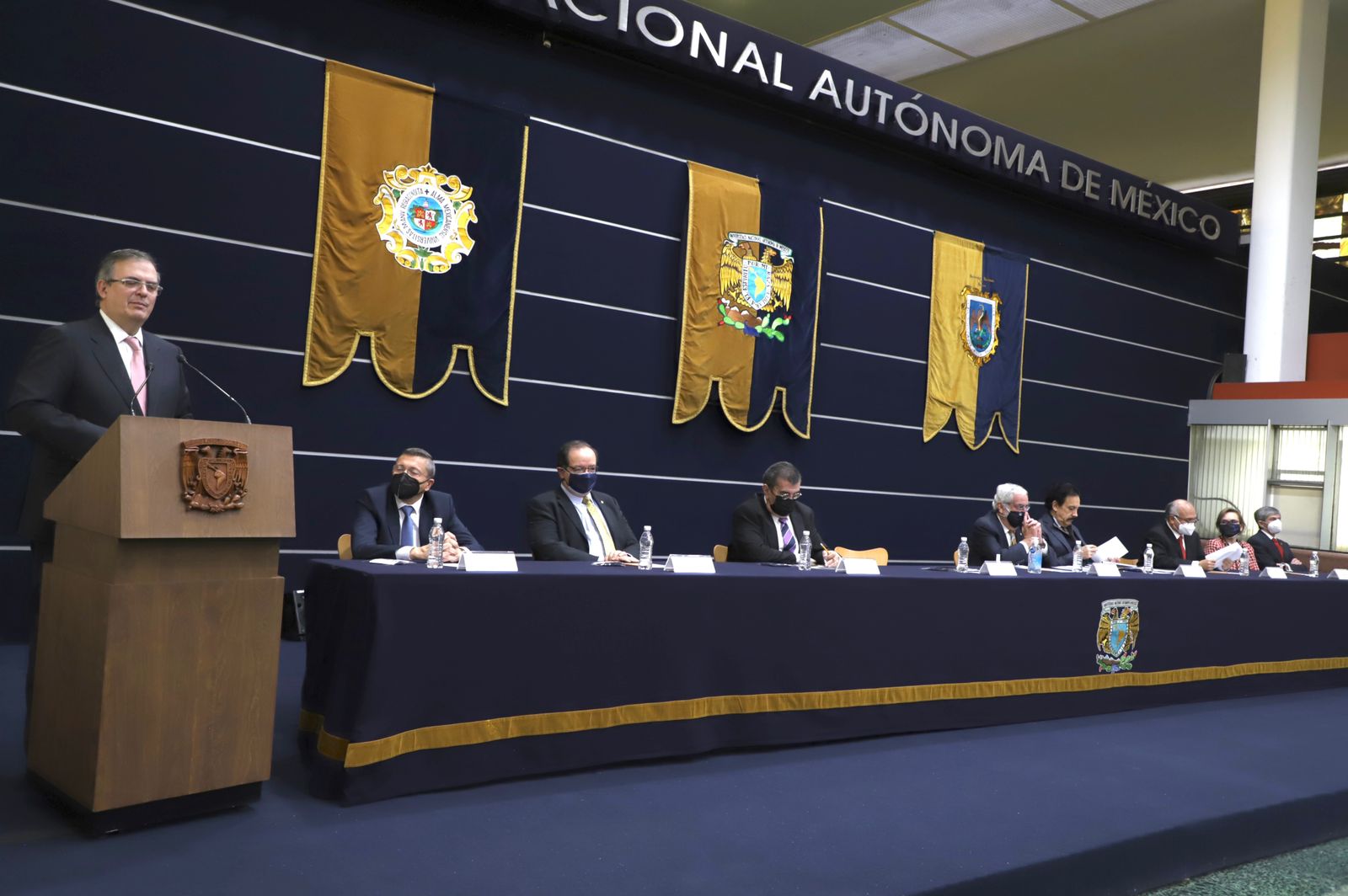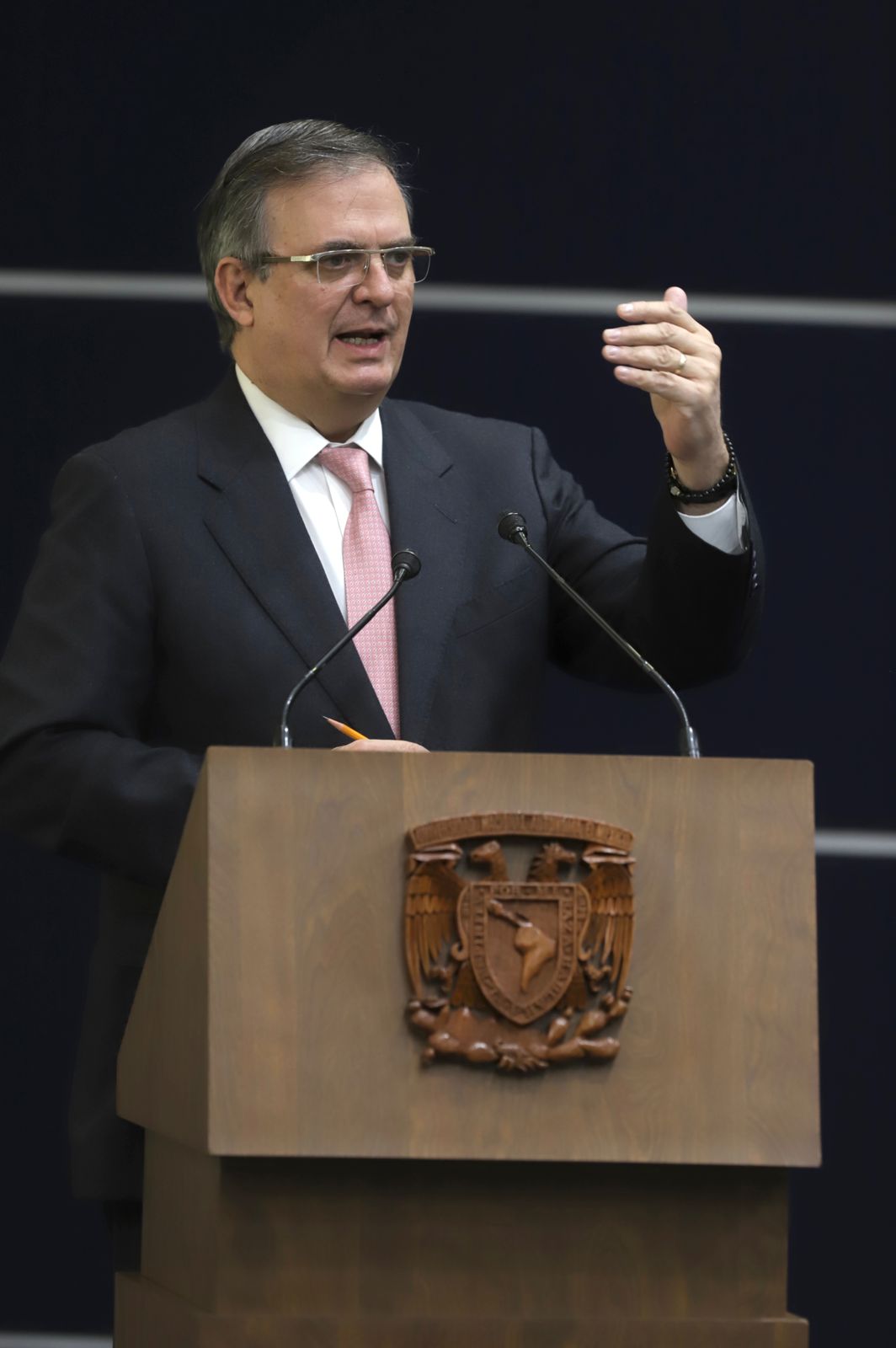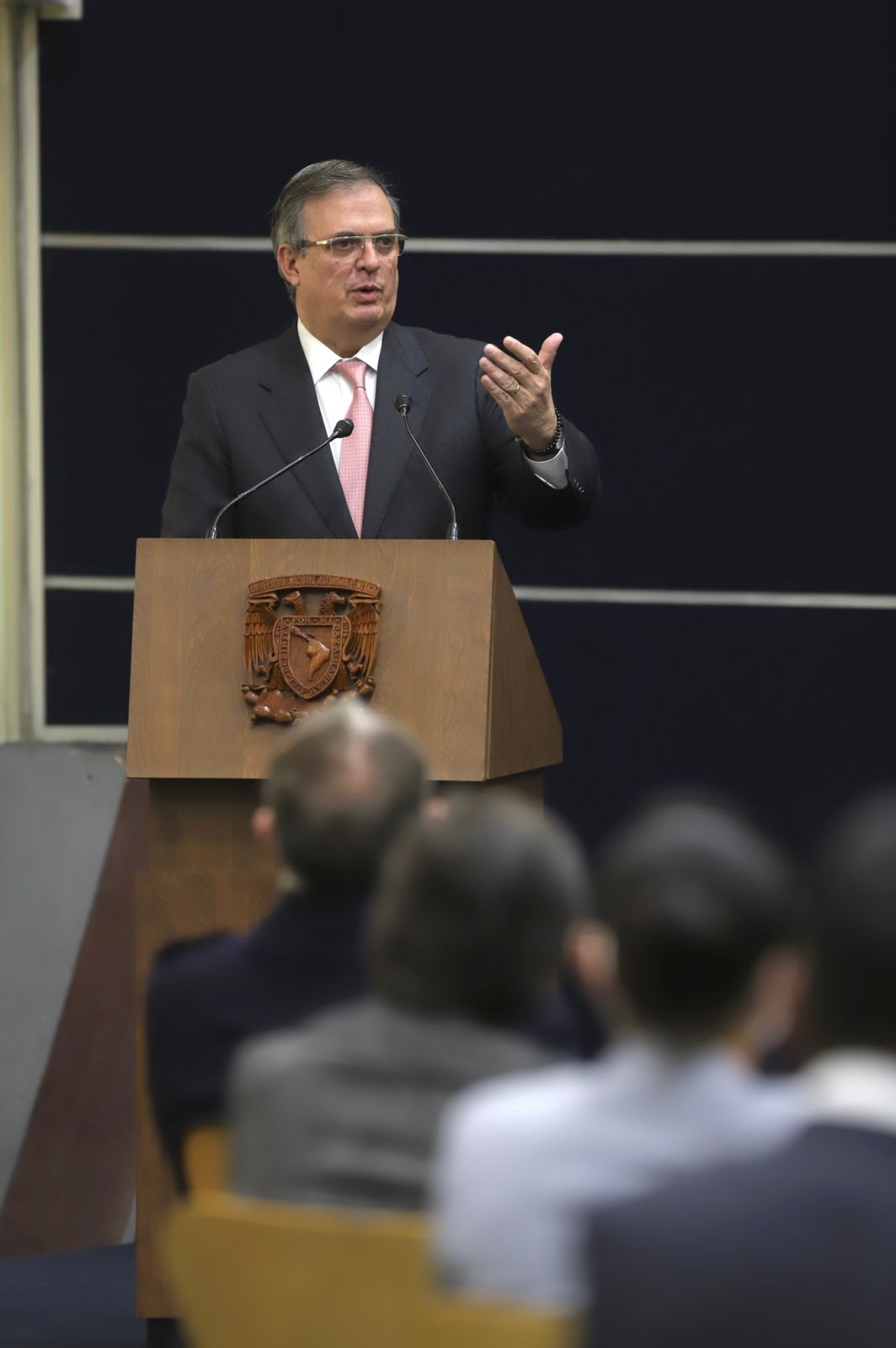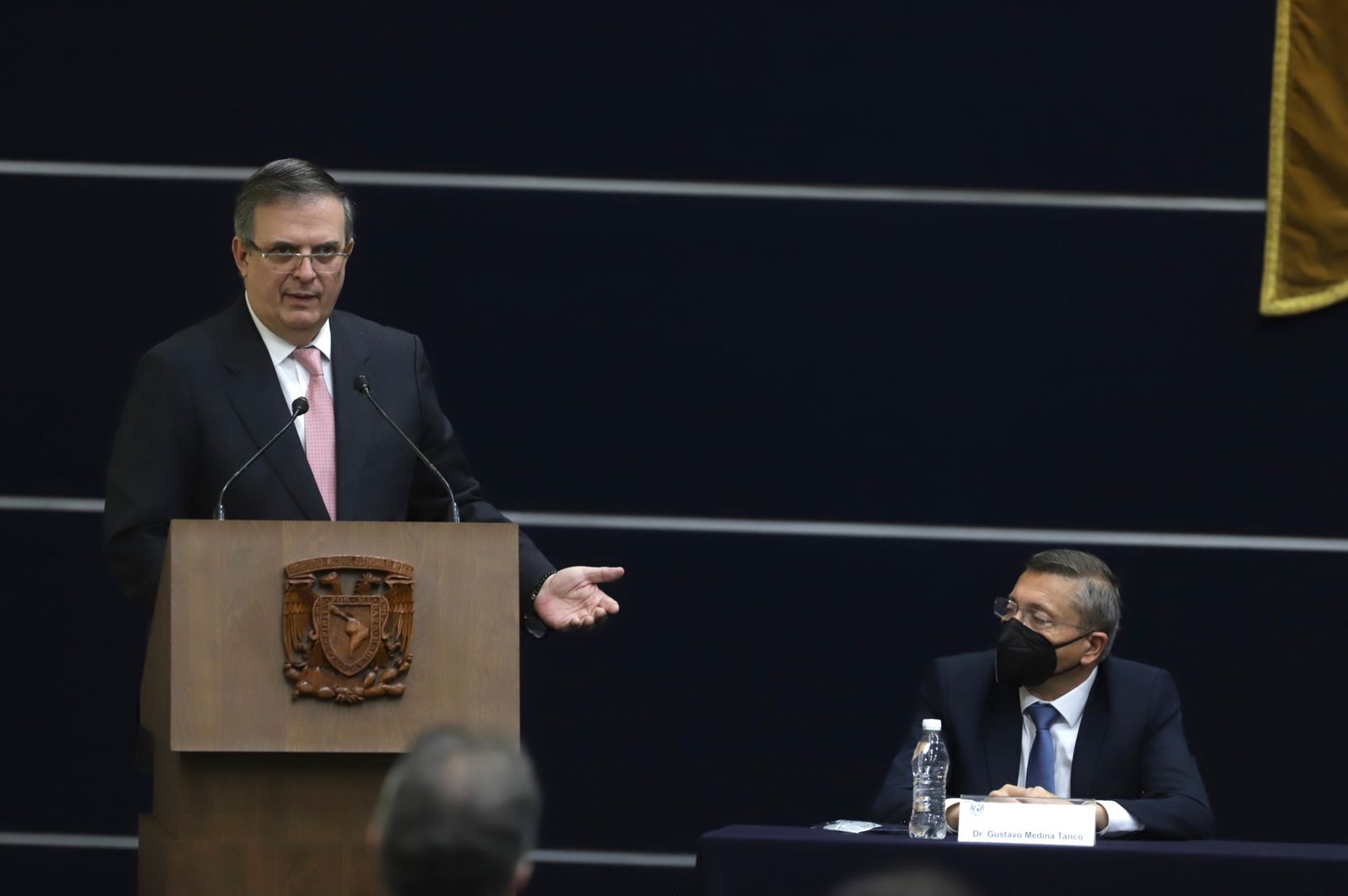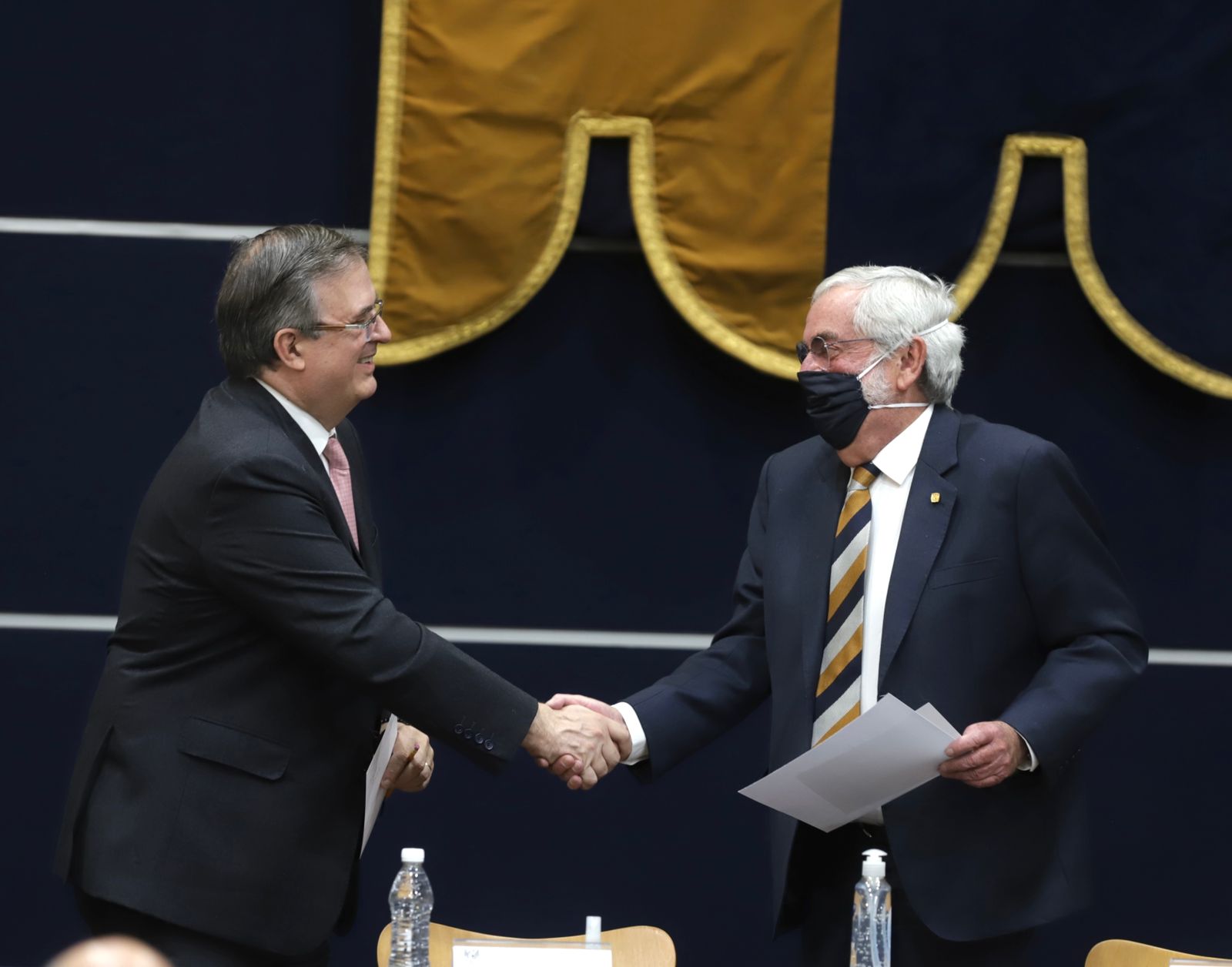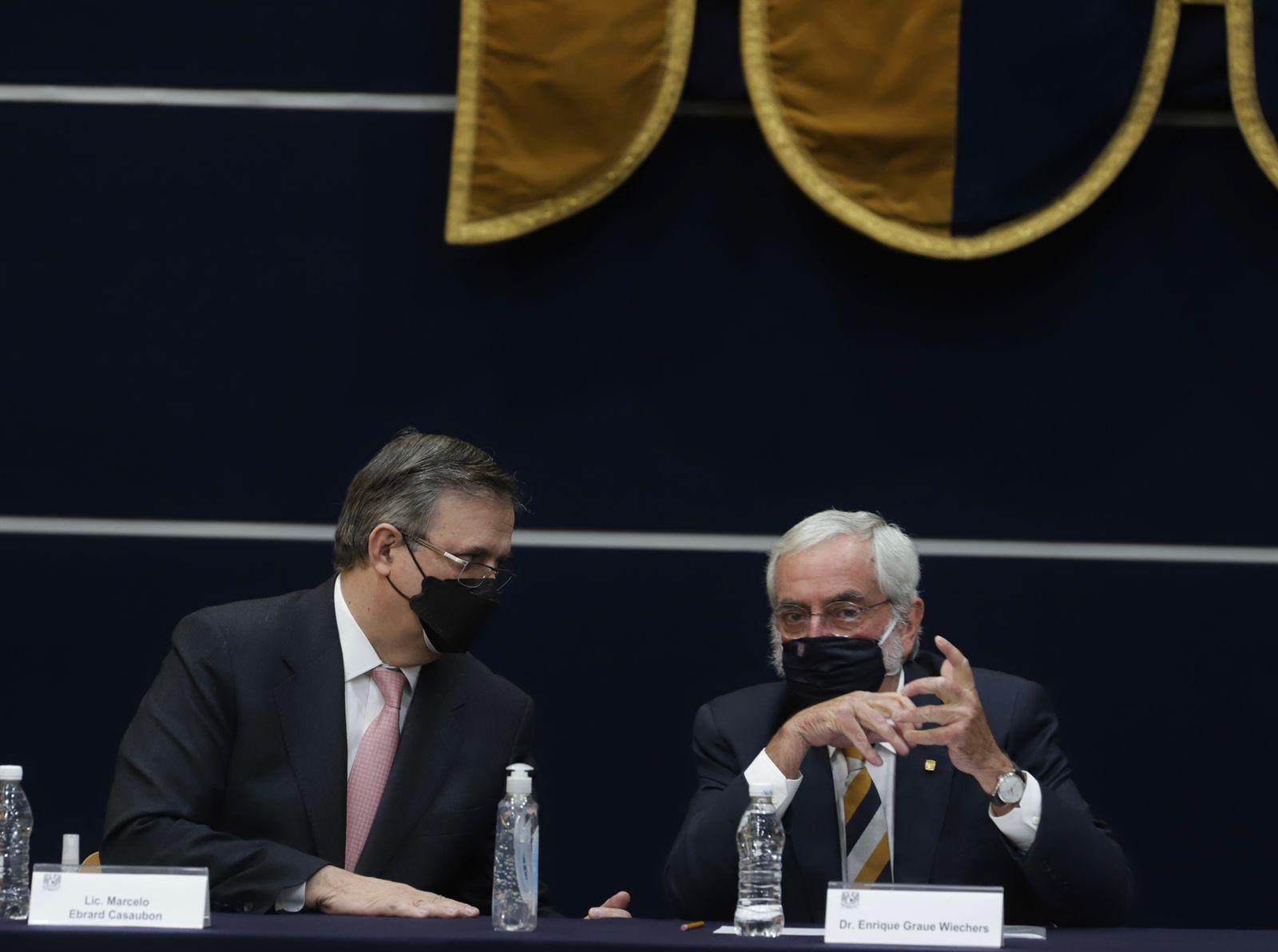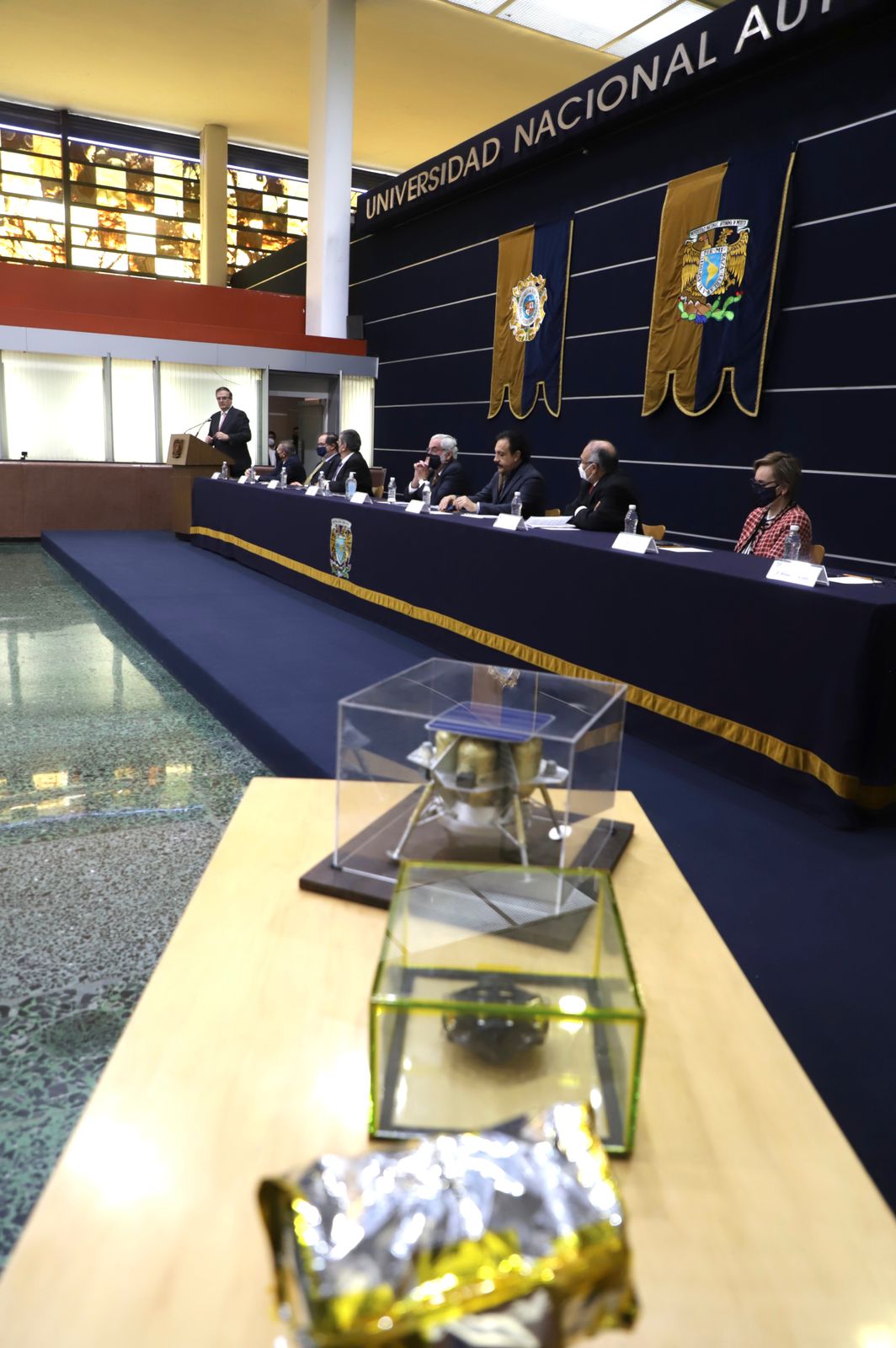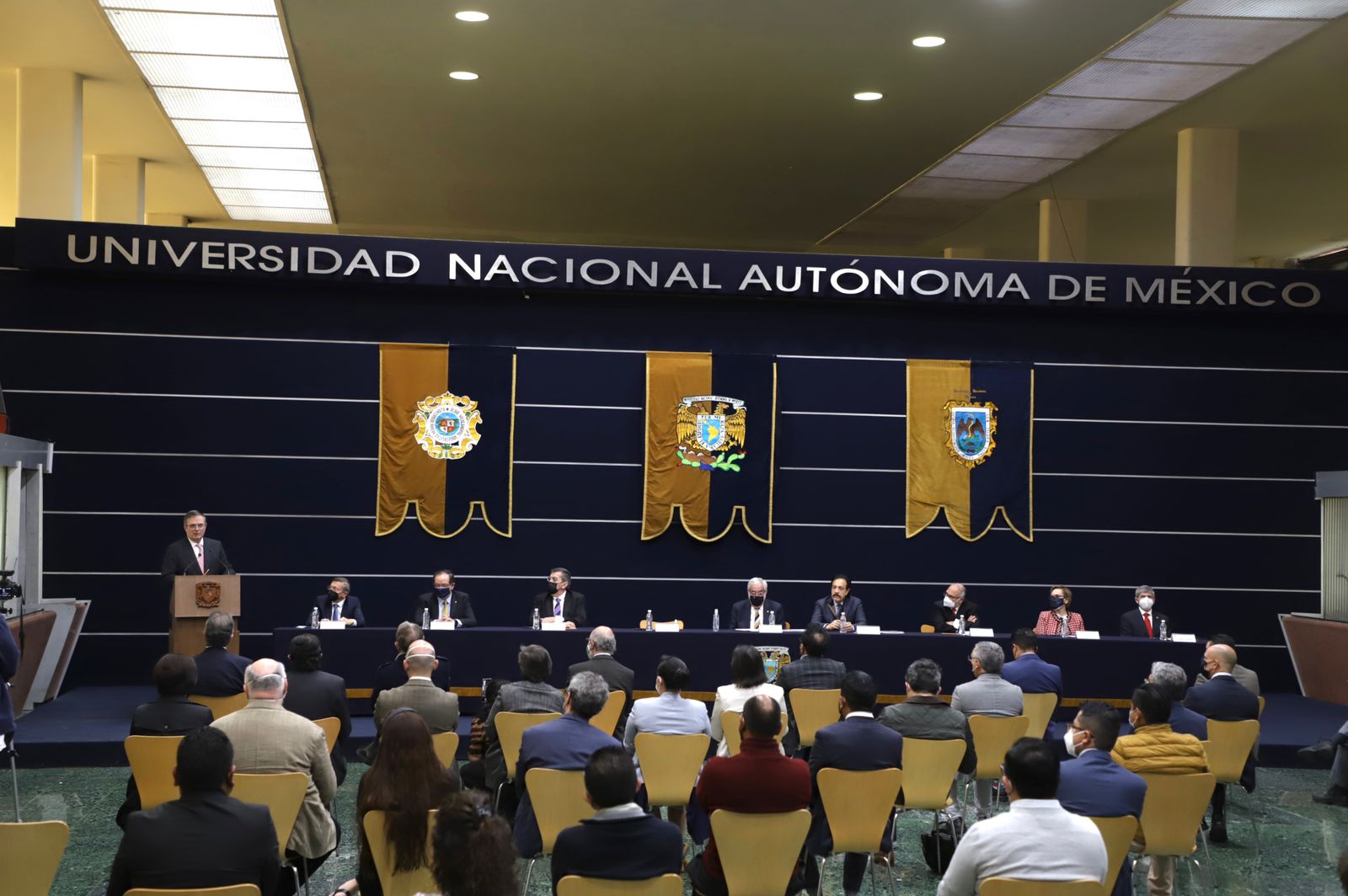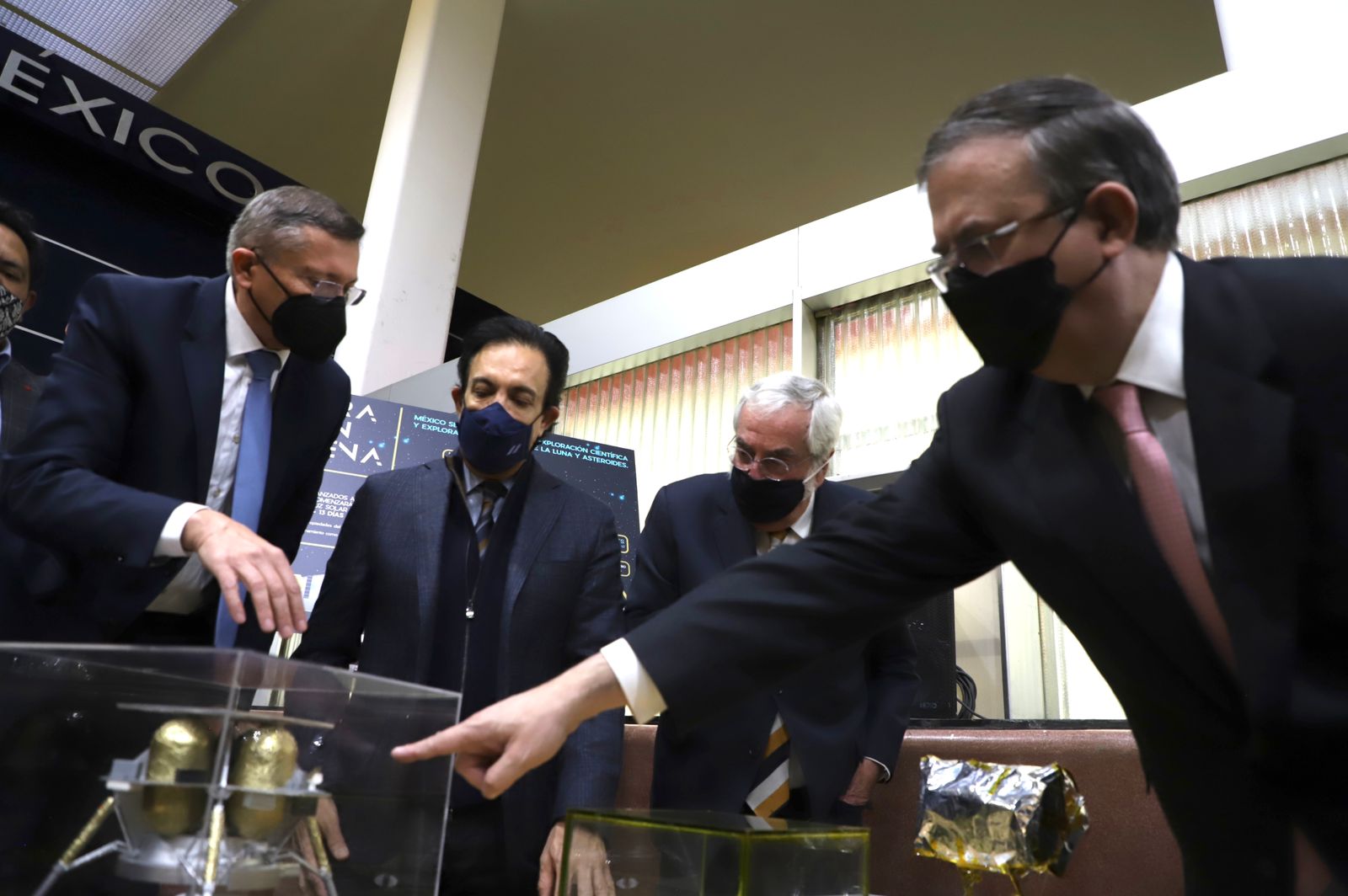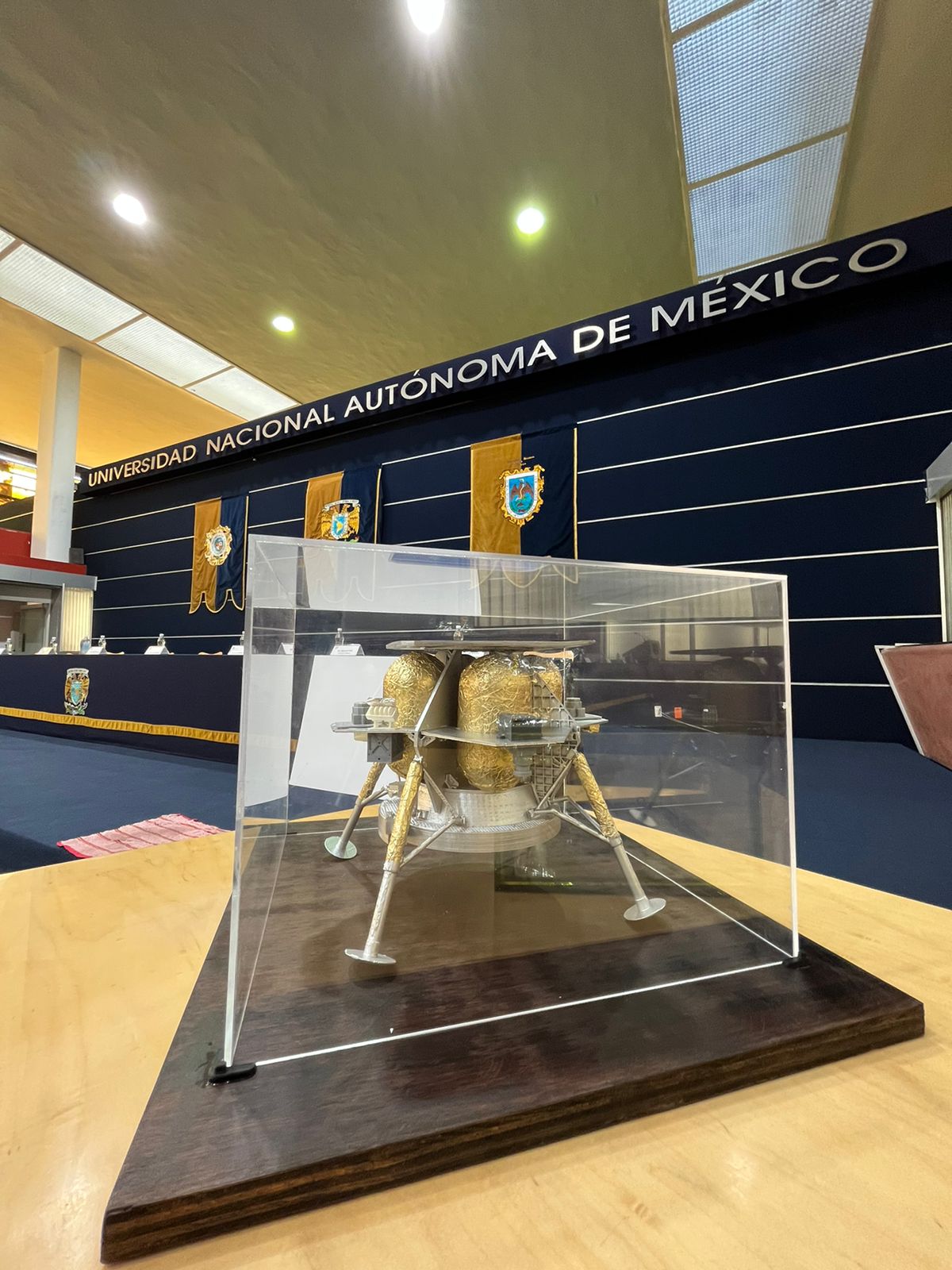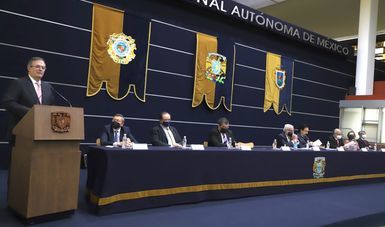- The project is headed by UNAM in collaboration with the Foreign Ministry, the Hidalgo state government and the Mexican Space Agency
- It shows the strength of the university, its research institutes and the Space Instrumentation Laboratory: Rector Enrique Graue
- The robots will work in coordination to demonstrate that they can be space explorers and miners: Gustavo Medina
- We are experiencing a unique moment in the space industry and Mexico wants to be part of it: Governor Omar Fayad
Today was the kickoff of the COLMENA Project, the first Mexican lunar exploration mission. It is headed by the UNAM and accompanied by the Foreign Ministry, the Mexican Space Agency (AEM) and the state of Hidalgo.
The mission, which will land on the moon in June, consists of five small robots that will be placed on the lunar surface. They are already on board the Peregrine Lander, made by the US Astrobotic company, and ready to travel the 384,400 kilometers that separate Earth from the moon.
During the presentation of the mission, UNAM Rector Enrique Graue said that the ceremony was a celebration of the strength of the National University and its research institutes, and of the progress made by the Space Instrumentation Laboratory (LINX), with the participation of 200 students who use basic science to transform reality.
Rector Graue commended the interest of the Mexican government in using applied science to enhance the nation's future; the Foreign Ministry for making it part of its public policies; and the state government of Hidalgo for driving innovation.
"In the coming months we will work on getting these robots into space; we'll celebrate their launch in June and then their arrival," said the rector at the ceremony held at the UNAM.
In his remarks, Foreign Secretary Marcelo Ebrard said, "The role of the Foreign Ministry is to support Mexico's important scientific projects. That is our task and we have given space a high level of priority in Mexico's foreign policy."
He highlighted "the importance of being on time for the world's great technological and scientific transformations. We want and can participate in everything that represents technological and scientific progress, everything that benefits Mexico."
Hidalgo Governor Omar Fayad said that the mission represents one of Mexico's priorities for the future, and that the participating institutions understand that this is a unique moment for the world's space sector, in which Mexico must participate.
“COLMENA highlights all the values of the UNAM, and gives Mexican society a new way of seeing and understanding the modern world and the confidence that things are possible and that we can overcome our own limits. It will be a turning point and, when it happens next June, all of Mexico's children and youths will know about it. Maybe it will inspire the next astronaut or the leader of the next missions," he said.
Gustavo Medina, the head of LINX at the UNAM Institute of Nuclear Sciences (ICN), said that a big transformation is underway and what is known as Space 4.0 and COLMENA is part of that. It is an original international mission, the first stage of a space technology niche that they want to develop so that Mexico can be a producer of goods, wealth, knowledge and well-being.
The mission calls for the robots to act autonomously and, taking nature as an example, demonstrate that they can coordinate and be space explorers and miners.
The five robots each weigh less than 60 grams (0.1 pounds) and measure 12 centimeters (4.7 inches) in diameter. All of their electronics will be less than two centimeters from the rocky rubble on the moon's surface known as the lunar regolith. "This is an international technological challenge; it's the first time it's been done and it's being done by Mexico and the UNAM," he said.
The Director General of the Mexican Space Agency, Salvador Landeros, said the Colmena project confirms that Mexican engineering is on a par with the best in the world, as this will be the first Mexican lunar exploration project. He announced that work is already being done on new projects to produce oxygen and energy on the Moon, all with Mexican technology.
He highlighted the fact that Mexico recently joined NASA's Artemisa program, after the efforts of the Foreign Ministry and an invitation from the United States government.
The director of the UNAM Nuclear Sciences Institute (ICN), María del Pilar Carreón, highlighted the efforts of Dr. Medina and the students to create something for the benefit of all. "This shows that, thanks to basic science, large-scale projects can be achieved," she said, expressing her commitment to support initiatives that enhance the reputation of the Institute, UNAM and Mexico.
Also participating on behalf of the UNAM were Secretary General Leonardo Lomelí and the coordinator of Scientific Research, William Lee Alardín, among others.
